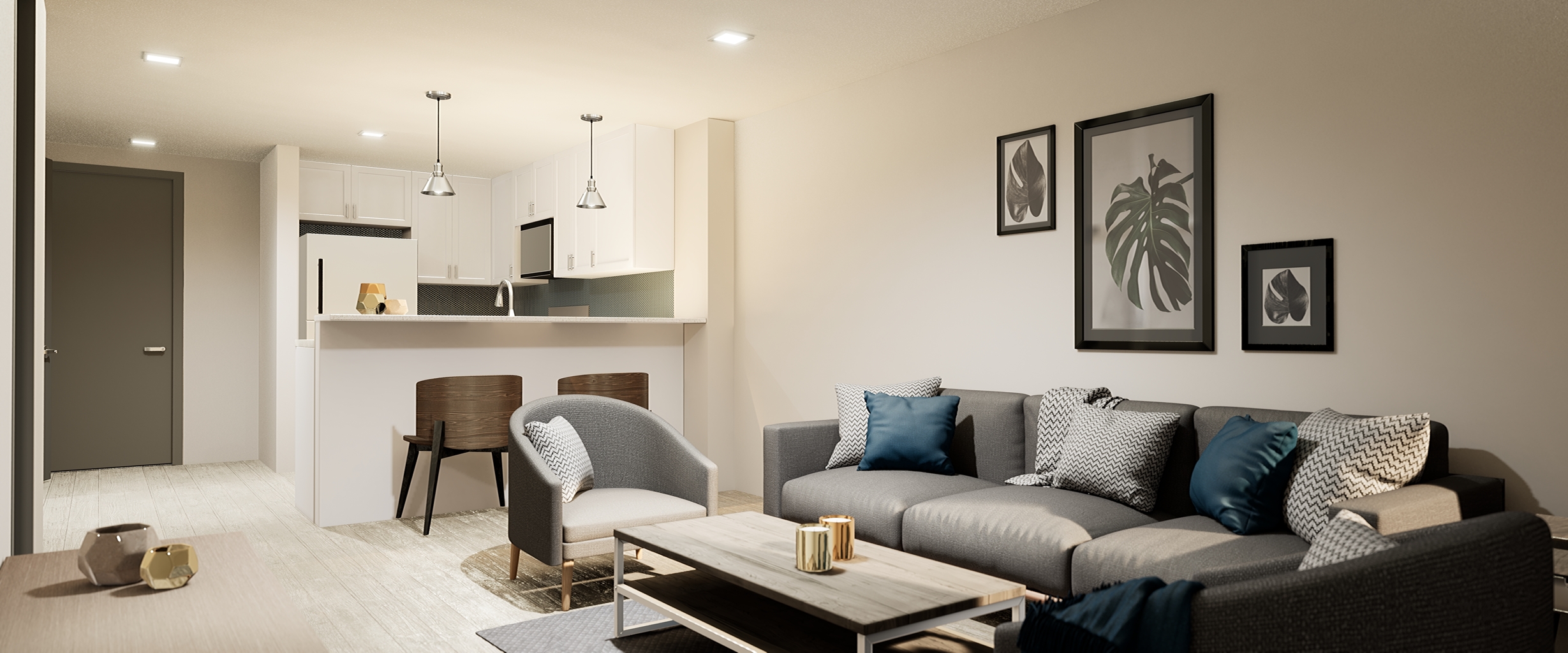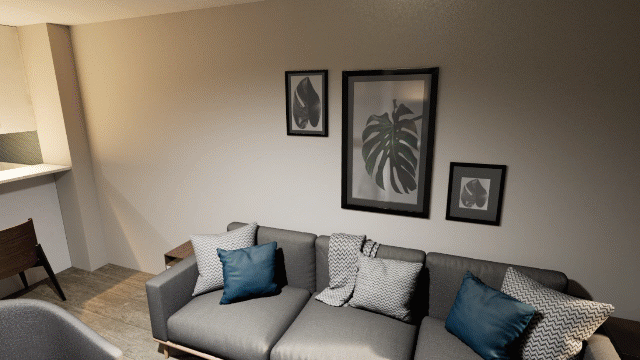
Client: Robins & Morton
Company: VIATechnik
Role: Production manager, VR developer, client contact
Collaborators: 3D & Environment Arists
Platforms: Unreal Engine 4, Oculus Rift-S, Oculus Quest 2 (Android), Pico Neo 2 (Android), HTML
To assist the owner and Architect in design coordination, VIATechnik developed a Virtual Reality tour of three apartment spaces. With a limited budget, VIATechnik was recruited to generate a visualization that would accurately depict the overall material and geometry design, allowing the Architect and owner to understand the proposed design. Typical turnkey solutions for VR would not work in this instance as the Architectural design was developed mostly through 2D methods. Thus, another key challenge of the project was effectively translating 2D drawings into a full 3D scene.
I engaged the client in a workshop to determine the best scheme for controls that could be unified across all of their projects. The control scheme would also include support for multiple controller models to increase accessibility. From previous VR reviews, the client indicated a need to onboard new users with little to no instruction. One possible discussed solution was creating a tutorial level that would walk users through the control layout, but eventually the team settled on the simple and effective solution of remapping the functions to more intuitive buttons while also adding literal text tooltips attached to the controller buttons.

In addition to the control layout scheme, we also found a solution for an intuitive menu design. This menu would primarily allow users to jump between the different apartment spaces and would also provide options for exiting or returning to the main menu. We designed this basic menu in a way that could be extensible if, in the future, the client would need to add more functions. The design uses pages to group these functions. Users can scroll left and right to tab between pages or up and down to select menu options. A slight highlight and delay was also added when a user selects a menu option. Based on the client’s insights from previous VR reviews, this subtle feature would indicate a ‘successful’ menu selection to the user, whereas before there was confusion if the menu option was selected or canceled.
The scene assets were built in Maya then imported to Unreal Engine. We used high-quality furniture from our existing library to save time and efficiently intuit the design vision. The scene was eventually built for PC and Android platforms. The Android version was tested on both Quest 2 and Pico Neo 2 to assess headset performance. Both headsets exhibited similar performance and ease of launch, so eventually the client settled on using the Oculus Quest 2 due to their existing familiarity with the platform.
We also used this project to internally test the feasibility of building for HTML where the scene could be accessed and navigated through a web browser. We chose to use Unreal Engine 4.23’s built-in HTML build tools and we reconstructed one of the three units in a new scene. Substance materials had to be replaced with other new materials as we found they were not compatible. We also optimized texture sizes to reduce the overall package size to reduce browser load times, with the final build package just under 250 Mb.